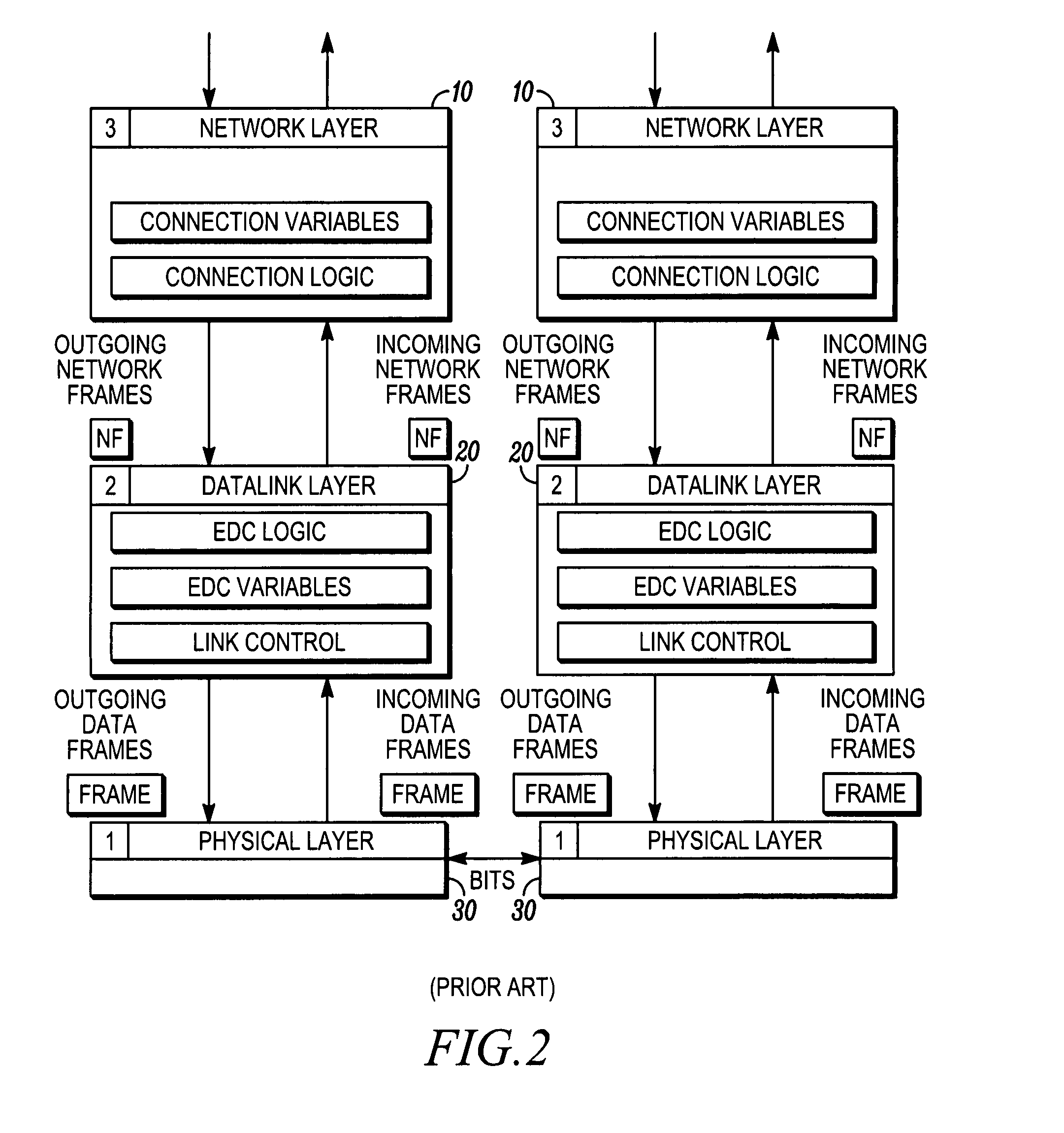Limited automatic repeat request protocol for frame-based communication channels
a frame-based communication and automatic repeating technology, applied in the field of communication systems, can solve the problems of not retransmitting lost frames, not correcting frames, and many higher layer protocols designed with low error rates in mind,
- Summary
- Abstract
- Description
- Claims
- Application Information
AI Technical Summary
Benefits of technology
Problems solved by technology
Method used
Image
Examples
Embodiment Construction
[0032] Several embodiments are described herein for implementing a protocol referred to herein as the “LARQ” protocol (for Limited Automatic Repeat reQuest). As will be apparent upon reading this description, the LARQ protocol reduces the effective error rate of an unreliable frame-based communication channel or network. Unlike most sequence number-based protocols, LARQ does not attempt to guarantee reliable delivery of every frame, but instead attempts to cover up some losses in the physical layer through fast retransmission of lost frames and leaves the reliable delivery of every frame to the higher network layers. This significantly enhances the usability of networks that may, at least occasionally, have loss rates of one in a hundred frames or worse, and provides this enhancement with minimal additional complexity at the lower network layers.
[0033] One such application for the LARQ protocol is where methods used for highly reliable channels are adapted for unreliable channels. ...
PUM
 Login to View More
Login to View More Abstract
Description
Claims
Application Information
 Login to View More
Login to View More - R&D
- Intellectual Property
- Life Sciences
- Materials
- Tech Scout
- Unparalleled Data Quality
- Higher Quality Content
- 60% Fewer Hallucinations
Browse by: Latest US Patents, China's latest patents, Technical Efficacy Thesaurus, Application Domain, Technology Topic, Popular Technical Reports.
© 2025 PatSnap. All rights reserved.Legal|Privacy policy|Modern Slavery Act Transparency Statement|Sitemap|About US| Contact US: help@patsnap.com



